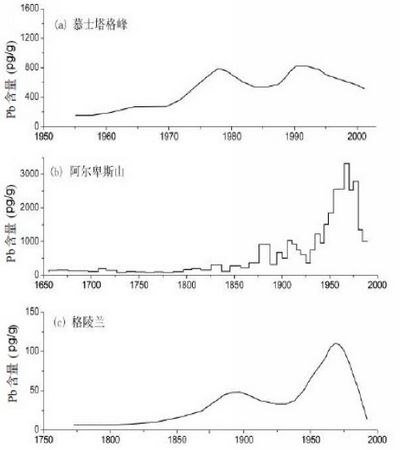Modern Process and Historical Reconstruction of Pb and Hg in Remote Areas:A Critical Review
Updatetime:2011-03-02From:
【Enlarge】【Reduce】
Atmospheric heavy metals (especially Pb and Hg) from anthropogenic activities could be transported globally, resulting in tremendous negative effects on the environment.Therefore, such research has received increasing attention in recent decades. In order to evaluate the pollution status, to understand the global transport process, and to elucidate its biogeochemical cycle and ultimate fate, it is necessary to carry out related studies in remote areas. In this paper, the progress on the historical reconstruction of heavy metals through ice core and lake sediment, as well as modern long range transport process are summarized.
Based on the discussion, the directions for future studies are also proposed. Due to the unique atmospheric circulation regime and clean environment, the Tibetan Plateau is an ideal region to monitor atmospheric environmental change and to evaluate various impacts caused by human activities. Nam Co, as one of the typical regions of the Tibetan Plateau, has obvious advantages for such research due to various environmental archives (ice core and lake sediment) available. The establishment of Nam Co Station (under the Institute of Tibetan Plateau Research, CAS) also makes it practicable to conduct long-term monitoring of the
modern atmospheric properties.
|
The historical variation of Pb concentration in ice cores from Muztagata, Alps, and Greenland (Picture/ACTA GEOGRAPHICA SINICA) |
Appendix





